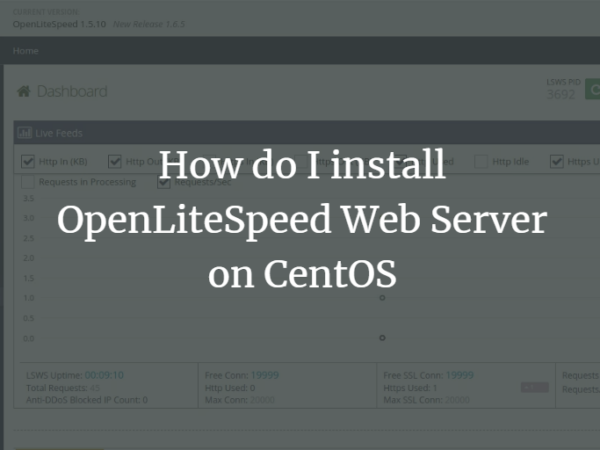Amazon Linux 2 is the next generation of Amazon Linux, a Linux server operating system from Amazon Web Services (AWS). It provides a secure, stable, and high performance execution environment to develop and run cloud and enterprise applications. Amazon Linux itself is based on Red Hat Enterprise Linux and uses RPM packages, a modified version of the Yellowdog Updater (YUM) and other familiar tools. The base image includes systemd, tool chain, build tools, a fine-tuned version of the latest LTS Linux kernel, plus a set of ‘core’ packages that aid performance and security.
Released on September 24th, 2019, CentOS 8 came with major changes from its predecessor. It is based on RHEL 8 and as many know, RHEL has a reputation of stability, efficiency, and reliability that is serving many enterprise systems around the globe.
This article goes into the details of what lies behind the skins of CentOS 8 and Amazon Linux 2. Take a relaxing sigh, stay tuned, and indulge in the article that checks the two out in the tabular representation below.
| Feature | CentOS 8 | Amazon Linux 2 |
|---|---|---|
| Release date | September 24th, 2019 | December 2017 |
| Based on | Based on Fedora 28 (RedHat) | RHEL |
| Backing Company | Red Hat | Amazon |
| System processes Management |
Systemd | Systemd |
| Kernel | Upstream kernel 4.18 | Linux Kernel 4.14 |
| Software Management |
YUM package manager is now based on the DNF technology and it provides support for modular content. Uses YUM v4, distributed with RPM 4.14 |
Primary channel for delivering security updates is Amazon Linux 2 yum repositories |
| Desktop Environment |
Default GNOME Display Manager is Wayland, GNOME Shell version 3.28 | The MATE desktop environment, a lightweight GUI based on GNOME 2, is available as an extra for Amazon Linux 2 |
| On-premises use | CentOS 8 is available as a virtual machine image for on-premises use | Amazon Linux 2 is available as a virtual machine image for on-premises use but optimized for AWS cloud usage. |
| Firewall | Uses nftables packet filtering framework | Uses iptables packet filtering framework |
| Support up to | Supported for 10 years with security and maintenance updates, until 2029 | Supported for 5 years with security and maintenance updates, until June 30, 2023 |
| Supported Architectures | x86_64 (64 bit Intel/AMD) aarch64 (64-bit ARM) ppc64le (IBM POWER, little endian) |
x86_64 (AMD/Intel 64 bit) 32-bit libraries |
| AWS Integration | For AWS integration tools you’ll have to install them manually | The Amazon Linux 2 includes packages and configurations that help ease integration with other AWS Services. |
| Kernel Live Patching | Only on RHEL for customers with active subscription for important and Critical CVEs. | Amazon Linux 2 includes kernel live patching functionality. |
Amazon Linux 2 as it can be guessed is now generally available in Amazon Web Services AMI for customers to enjoy without extra costs including support for the latest Amazon EC2 instance capabilities and is tuned for enhanced performance. It includes packages that help ease integration with other AWS Services.
On the other hand, Since March 2004, CentOS Linux has been a community-supported distribution derived from sources freely provided to the public by Red Hat. As such, CentOS Linux aims to be functionally compatible with RHEL.
Amazon Linux 2 and CentOS 8 share a common origin but were created with different visions in the mind of the developers. They are both amazing Operating Systems CentOS enjoying the attribute of time while Amazon enjoying the brand that sits behind it.
Linux Learning course:
<img data-ezsrc="https://kirelos.com/wp-content/uploads/2020/06/echo/icon_udemy-com.png5ee760c1d5199.jpg" ezimgfmt="rs rscb8 src ng ngcb8" src="data:image/svg xml,”>Udemy.com
<img data-ezsrc="https://kirelos.com/wp-content/uploads/2020/06/echo/icon_udemy-com.png5ee760c1d5199.jpg" ezimgfmt="rs rscb8 src ng ngcb8" src="data:image/svg xml,”>Udemy.com
<img data-ezsrc="https://kirelos.com/wp-content/uploads/2020/06/echo/icon_udemy-com.png5ee760c1d5199.jpg" ezimgfmt="rs rscb8 src ng ngcb8" src="data:image/svg xml,”>Udemy.com
All the way from security to how to manage software, you should anticipate finding major enhancements all in a bid to make Server management for both distributions as easier and as secure as possible as time and development perpetuate.



